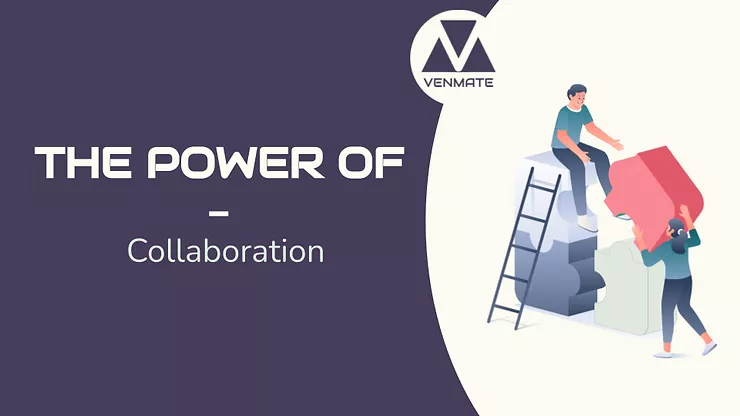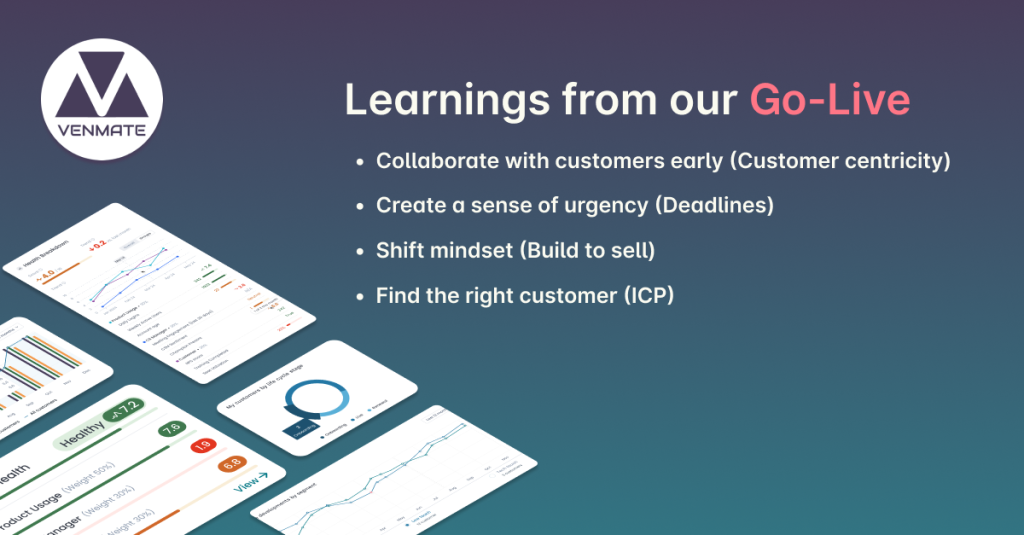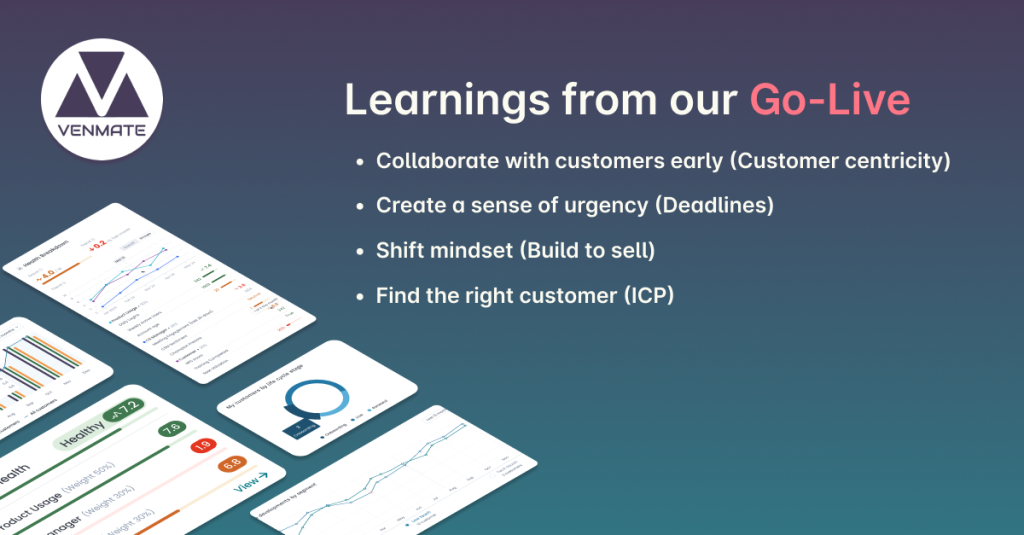In our series “The power of …” we are talking about key topics in customer success management and trying to highlight their importance and positive effect on customer relationships, retention and general top and bottom line business impact. In this VENMATE Blog post, we delve deeper into the topic of “collaboration” in customer success management (CSM) and show its true power when done correctly.
In the dynamic landscape of Customer Success Management (CSM), the paradigm has shifted from reactive to proactive strategies and the significance of collaboration cannot be overstated. Especially B2B customers increasingly want to feel more engaged and be involved in the process. They want to be heard and collaborate for better results and long-term relationships. Research in the field emphasizes the pivotal role of collaboration and community building. Statistics from industryselect.com suggest that good interaction and collaboration with customers in the B2B sector can increase
“retention by 54%, customer advocacy by 50%
and customer satisfaction by 46%.”
Source: https://www.industryselect.com/blog/14-surprising-customer-retention-statistics
The necessary collaboration points
Collaboration is not a one-size-fits-all concept and the times of simple internal collaboration concepts are over. Especially in B2B businesses, collaboration must include the customers across various steps along the customer journey.
1. Handover and onboarding
Effective collaboration between sales, customer support, and product teams ensures a seamless onboarding process. This initial phase sets the tone for the customer’s journey, and a united front delivers a positive experience, reducing the likelihood of churn during the critical onboarding phase. But collaboration should not only happen between teams, but also include the customer and should happen as early as possible in the engagement process. Sharing information with the customers and including them in kick-off meetings, task tracking activities and the definition of success metrics is key.
2. Usage and adoption
Collaboration becomes crucial when ensuring customers fully utilize the product and hence plays a vital role in ensuring customers derive maximum value from the product. CSMs collaborate with customers to understand their unique needs, providing tailored resources, training, and updates. This collaborative effort not only drives product adoption but also strengthens the partnership.
3. Feedback
Establishing a robust feedback loop requires collaboration between customer-facing teams and product developers but also engaging in open and constructive feedback discussions with the customer helps CSMs understand customer preferences and concerns, leading to iterative improvements and increased customer satisfaction.
4. Renewal and upselling opportunities
Collaboration during the renewal and upselling phase is not about selling but understanding. CSMs work collaboratively with customers to comprehend their evolving needs, aligning product offerings to address those needs. This collaborative approach contributes not only to renewed contracts but also to expanded partnerships.
The Positive effects of collaboration
When customer collaboration is executed correctly from customer success individuals, it yields numerous positive effects, throughout the entire organization. Among others:
1. Enhanced customer experience
Collaboration ensures a holistic view of the customer journey, enabling organizations to address pain points promptly. This results in an overall improved customer experience, fostering loyalty and satisfaction.
2. Proactive issue resolution
It results in early identification and resolution of issues. By pooling resources and expertise, teams can address challenges before they escalate, preventing customer dissatisfaction. Proactive issue resolution not only enhances customer satisfaction but also strengthens the reputation of the organization for responsiveness and reliability.
3. Deeper customer understanding
Collaboration fosters a deeper understanding of customer goals, challenges, and preferences. CSMs, by actively collaborating with customers, gain insights that go beyond metrics, enabling them to provide more personalized and effective support.
Do’s and Don’ts
a. Do’s
- Establish clear communication channels: Effective collaboration begins with transparent communication. Utilize project management tools, regular meetings, and shared documentation to keep everyone aligned. Open communication channels ensure that everyone is on the same page, reducing misunderstandings.
- Active listening: Customer Success Managers should actively listen to customer feedback, concerns, and aspirations. This practice forms the basis for effective collaboration, creating an environment where the customer feels heard and valued.
- Set expectations and keep them: Jointly setting milestones and aligning the expectation of a project or collaboration is key. The created transparency leads to trust and clarity. It reduces the chance of a customer churning and hence increases the likelihood of a healthy long-term relationship.
- Regular check-ins: Scheduled check-ins provide opportunities for continuous collaboration. Regular communication ensures that both CSMs and customers are aligned on expectations, progress, and any evolving needs.
- Co-creation of success plans: Collaboratively creating success plans enhances engagement. Involving customers in the development of success plans ensures that objectives are meaningful, achievable, and reflective of the customer’s unique journey.
b. Don’ts
- One-sided communication: One-sided communication, where either the CSM or the customer dominates discussions, hinders effective collaboration. A balanced exchange of ideas and insights is essential for a fruitful partnership.
- Ignoring customer feedback: Failing to incorporate customer feedback into decision-making processes hampers collaborative efforts. A closed feedback loop stifles innovation and improvement. Ignoring customer feedback sends a message that their opinions are not valued, potentially leading to disengagement. Customer centricity should not be a buzz word but actively enabled.
- Lack of personalization: Failing to personalize interactions based on customer preferences and goals indicates a lack of collaboration. Personalization requires understanding the customer on an individual level, tailoring engagements to their unique needs.
Conclusion
In conclusion, collaboration is the cornerstone of successful customer success management. Statistics underscore the impact of this collaboration on customer retention, and the positive effects are evident in deeper customer understanding, proactive issue resolution, strategic alignment and create better products with their feedback. By embracing best practices and avoiding bad habits, CSMs can foster collaborative relationships that exceed traditional vendor-client dynamics, creating a foundation for long-term success and mutual growth leading to real bottom line improvements.
VENMATE: Your partner that enables great collaboration with your customers
With VENMATE one of our major goals is to enable open collaboration along the entire customer journey. We created multiple opportunities for CSMs and customers to directly collaborate on VENMATE. Meaning, that VENMATE is the first CSM tool having the CSM and their customers both being able to jointly use specific features. By this, we promote two-way feedback at any stage in the customer journey, empower direct communication between the parties and even enable them to work together on task lists and create success, milestone and project plans. VENMATE truly helps B2B companies to put the customer into the heart of their business and hence improve retention and drive bottom line results.
If you enjoy our content, follow us on LinkedIn and stay up to date on the latest CSM Blogs and VENMATE product developments!
#customersuccessmanagement #collaboration #B2BSaaS #customerrelationship #customerretention







